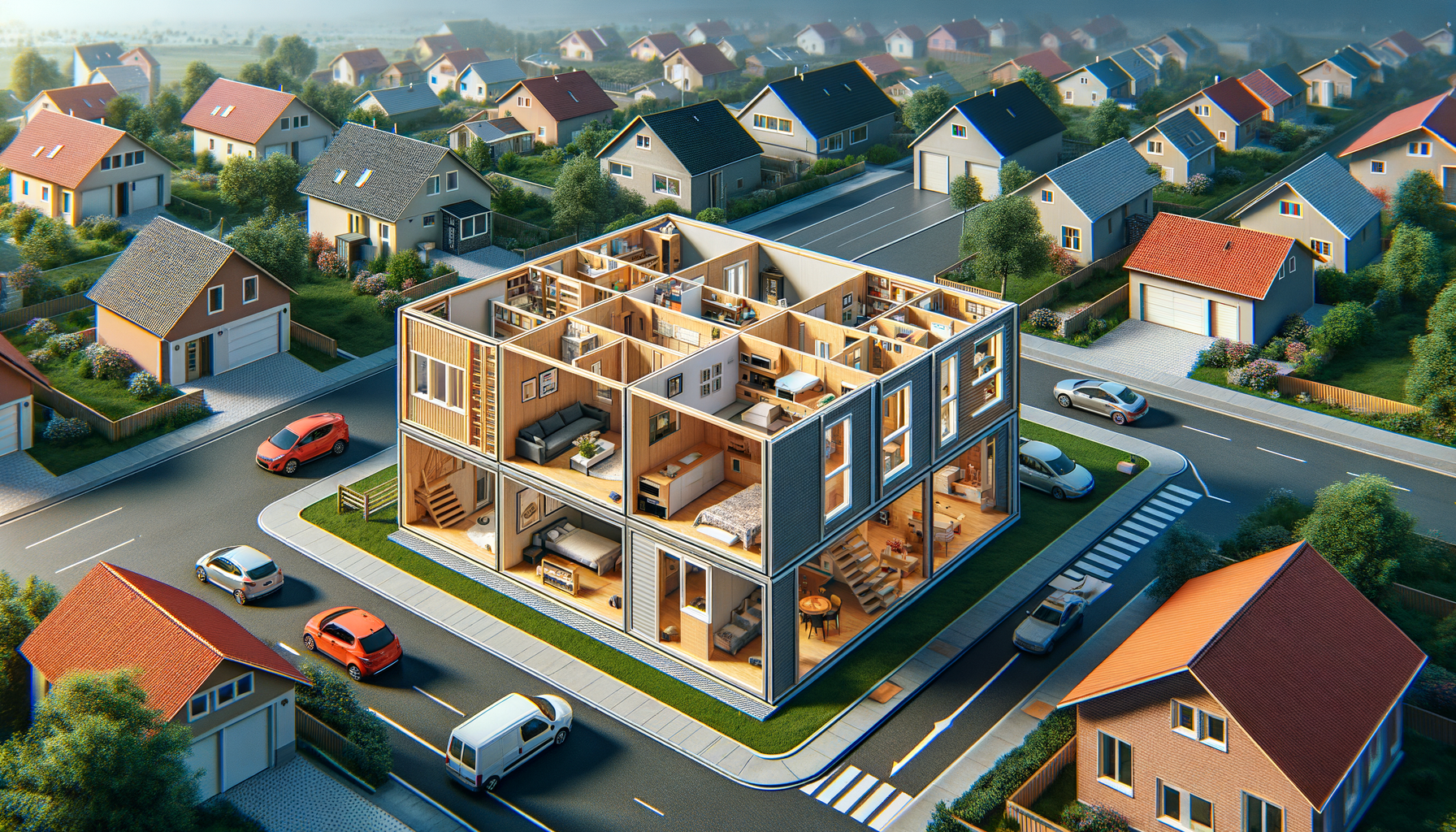Exploring Modular Homes: A Journey into Customization and Flexibility
Modular homes serve as a practical and economical solution for those seeking to craft their unique living spaces. Their advanced designs, coupled with energy-saving construction methods, make them a reliable choice for year-round living.

The Rise of Modular Homes: An Overview
In recent years, modular homes have gained significant traction as a viable alternative to traditional housing. These prefabricated structures are built off-site in a controlled factory environment and then transported to their final location for assembly. This method of construction offers several advantages, including reduced building time and minimized environmental impact. According to the National Association of Home Builders, modular homes can be completed in about half the time of a traditional site-built home, allowing homeowners to move in sooner and begin enjoying their new space.
Moreover, the precision of factory-built components ensures a high level of quality control. Each module is constructed under strict guidelines, resulting in fewer construction errors and less waste. This not only benefits the environment but also translates into cost savings for homeowners. As sustainability becomes increasingly important, the modular home industry is expected to continue its upward trend, offering innovative solutions to modern housing challenges.
Flexibility in Design: Tailoring Your Space
One of the most appealing aspects of modular homes is their inherent flexibility in design. Unlike traditional homes, which may be constrained by the limitations of on-site construction, modular homes allow for a high degree of customization. Homeowners can choose from a variety of floor plans, finishes, and fixtures to create a space that truly reflects their personal style and needs.
For instance, individuals can opt for open-concept living areas, additional bedrooms, or even specialized spaces such as home offices or gyms. The ability to customize extends beyond the interior layout; exterior features like siding, roofing, and landscaping can also be tailored to suit individual preferences. This level of customization ensures that each modular home is unique, offering a personalized living experience that is difficult to achieve with traditional construction methods.
Furthermore, modular homes can be easily expanded or modified over time. As needs change, homeowners can add additional modules or reconfigure existing spaces, providing a level of adaptability that is unmatched by conventional homes. This flexibility makes modular homes an attractive option for those seeking a long-term housing solution that can evolve with their lifestyle.
Cost-Effectiveness: Affordable Living Solutions
Cost is a critical factor for many prospective homeowners, and modular homes offer a compelling financial advantage. Due to the efficient construction process, modular homes typically cost less per square foot than traditional homes. The streamlined production in a factory setting reduces labor costs and minimizes material waste, resulting in significant savings for buyers.
Additionally, the shorter construction timeline means lower financing costs, as homeowners can move in sooner and begin accruing equity. Many modular home manufacturers also offer financing options that can be tailored to fit individual budgets, making homeownership more accessible to a broader audience.
Energy efficiency is another area where modular homes excel. Built with high-quality materials and advanced insulation techniques, these homes often feature superior energy performance compared to traditional builds. This translates into lower utility bills, further enhancing their cost-effectiveness. As energy costs continue to rise, the long-term savings associated with a modular home can be substantial, making them a smart investment for the future.
Environmental Benefits: A Sustainable Choice
In an era where sustainability is a growing concern, modular homes present an eco-friendly alternative to conventional housing. The controlled factory environment allows for the precise use of materials, significantly reducing waste. It is estimated that modular construction can reduce waste by up to 90% compared to traditional building methods.
Moreover, the materials used in modular homes are often sourced from sustainable suppliers, further minimizing their environmental footprint. Many manufacturers prioritize the use of recycled or renewable materials, contributing to the overall sustainability of the construction process.
Energy efficiency is another hallmark of modular homes. With advanced insulation and high-performance windows, these homes maintain a comfortable indoor climate with less energy consumption. Some modular homes are even designed to accommodate renewable energy systems, such as solar panels, allowing homeowners to further reduce their environmental impact.
As the demand for sustainable living solutions continues to grow, modular homes stand out as a responsible choice for environmentally conscious consumers. Their combination of reduced waste, energy efficiency, and sustainable materials makes them a leading option in the pursuit of greener living.
Conclusion: The Future of Modular Living
As housing needs evolve, modular homes offer a versatile and sustainable solution that meets the demands of modern living. Their flexibility in design, cost-effectiveness, and environmental benefits make them an attractive option for a wide range of homeowners. Whether you’re a first-time buyer, a growing family, or someone looking to downsize, modular homes provide the adaptability and customization needed to create a personalized living space.
With advancements in technology and construction methods, the future of modular homes looks promising. As more people recognize the advantages of this innovative housing option, it’s likely that modular homes will continue to gain popularity, shaping the landscape of residential living. For those seeking a home that combines quality, affordability, and sustainability, modular homes represent a forward-thinking choice that aligns with the values of the 21st century.